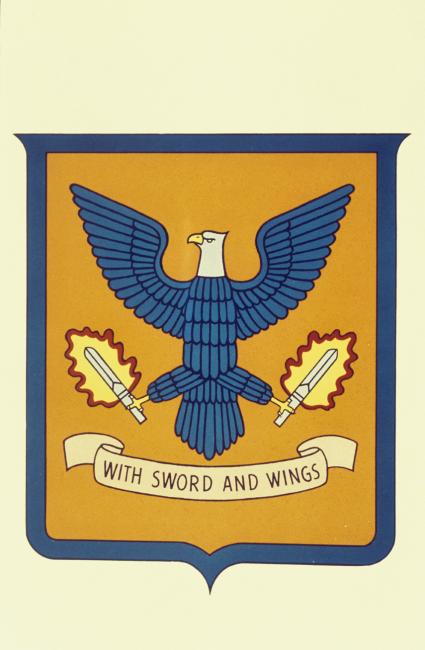VIII Fighter Command FO-210 BOMBER ESCORT
30 December 1943Description
A force of 583 fighter aircraft are despatched to provide escort to bombers attacking at Ludwigshafen, Germany. The force is composed of three elements. The first element is a force of 79 P-38s from 20FG and 55FG. There are no losses or claims in this element.
The second element is a force of 483 P-47s from: 4FG; 56FG; 78FG; 352FG; 353FG; 355FG; 356FG; 358FG; and 359FG. 11 aircraft Failed to Return (FTR) 6KIA 4POW 1EVD. 1 aircraft returned but was DBR and 5 others were damaged. This fighter element claimed 4-3-6 of attacking German aircraft.
The third element was a force of 41 P-51s from 354FG (9th Air Force) operating under VIII Fighter Command control). 2 aircraft Failed to Return (FTR) 2POW. There were no other casualties. The P-51 element claimed 4-0-0 of attacking German fighters.
The fighters of this mission claimed 8-3-6 of attacking German aircraft. 4 of the kills were attributed to 354FG
Mission Details
LUDWIGSHAVEN
Description: FIGHTER ESCORT
Aircraft Type: P-38 Lightning
Notes: 354th Fighter Group IX Fighter Command despatches 41 P-51s to join escort. (Statistics not included in totals)

- Unit Hierarchy: Group
- Air Force: Eighth Air Force
- Type Category: Fighter
Mission Statistics
- Prisoners of war: 2
- Aircraft sent: 79
- Aircraft missing in action: 2
LUDWIGSHAVEN
Description: FIGHTER ESCORT
Aircraft Type: P-47 Thunderbolt

- Unit Hierarchy: Group
- Air Force: Eighth Air Force
- Type Category: Fighter

- Unit Hierarchy: Group
- Air Force: Eighth Air Force
- Type Category: Fighter

- Unit Hierarchy: Group
- Air Force: Eighth Air Force
- Type Category: Fighter
![Ground crew of the 356th Fighter Group congratulate the pilot of a P-47 Thunderbolt nicknamed "Zombie" at Martlesham Heath air base. Handwritten caption on reverse: 'ZOMBIE yellow, black outline. [illegible text] black white common practice of 361st FS.'](https://assets.americanairmuseum.com/s3fs-public/styles/max_650x650/public/freeman/media-377162.jpg?itok=mPZN0Ow5)
- Unit Hierarchy: Group
- Air Force: Eighth Air Force
- Type Category: Fighter

- Unit Hierarchy: Group
- Air Force: Eighth Air Force
- Type Category: Fighter
Mission Statistics
- People killed in action: 6
- Prisoners of war: 6
- Enemy aircraft destroyed by fighter: 4
- Enemy aircraft probably destroyed by fighter: 3
- Enemy aircraft damaged by fighter: 6
- Aircraft sent: 463
- Aircraft missing in action: 13
- Aircraft damaged: 5
Ludwigshafen, Germany

- Unit Hierarchy: Group
- Air Force: Ninth Air Force
- Type Category: Fighter
Mission Statistics
- Prisoners of war: 2
- Enemy aircrafts destroyed by bomber: 4
- Aircraft sent: 41
- Aircraft missing in action: 2
Connections
See how this entry relates to other items in the archive by exploring the connections below.
People

- Military/Civilian/Mascot: Military
- Nationality: American
- Unit: 353rd Fighter Group 350th Fighter Squadron
- Service Numbers: O-665391
- Highest Rank: First Lieutenant
- Role/Job: Pilot
Revisions
Lee Cunningham 28-Jul-2015. Added fighter claims to P-47 element statistics per "The Mighty Eighth War Diary", Roger A. Freeman.
Lee Cunnigham 28-Jul-2015. Added NEW Mission event fro 354FG (9th AF) per "The Mighty Eighth War Diary", Roger A. Freeman.
Lee Cunningham 28-Jul-2015. Added Mission Narrative based on "The Mighty Eighth War Diary", Roger A. Freeman.
Lee Cunningham, 8th Air Force missions research database / Stan Bishop's 'Losses of the US 8th and 9th Air Forces', the Combat Chronology of the US Army Air Forces and the work of Roger Freeman including the 'Mighty Eighth War Diary'.